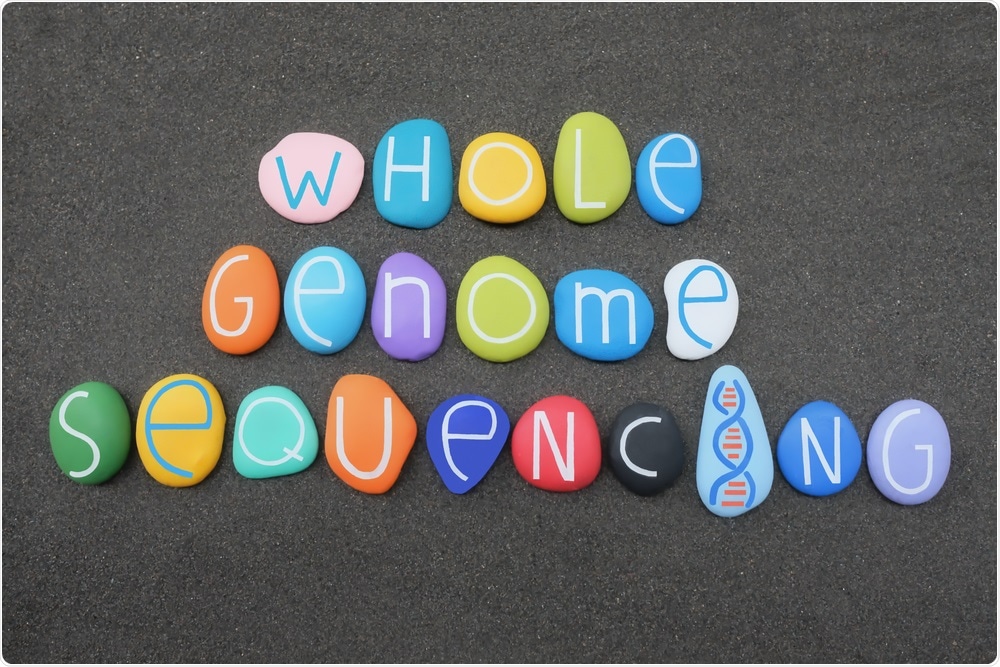According to a study presented at the NCRI Festival, revealing the entire genetic code for each child diagnosed with cancer could provide a more precise diagnosis or unravel new treatment options. These results are of a pilot study of the mechanism known as whole-genome sequencing.

Image Credit: yournameonstones/Shutterstock.com
The research also reveals how whole genome sequencing—performed currently for all childhood cancer patients in England—can be refined to provide utmost benefits to children with cancer.
The research was presented by Dr. Patrick Tarpey, lead researcher for solid cancer in the East Genomic Laboratory Hub, based at Cambridge University Hospitals NHS Foundation Trust, UK.
“Whole genome sequencing can sometimes unravel unexpected results that may not have been considered via routine investigations. We’ve already learned a lot about using this type of test in our pilot study, both in terms of its benefits for children and in terms of how to optimize the results.”
Dr Patrick Tarpey, Lead Researcher, Solid Cancer, East Genomic Laboratory Hub, Cambridge University Hospitals
The research was part of the 100,000 Genomes Project. It involved 36 children treated at Addenbrooke’s hospital in Cambridge and included 23 various types of solid tumors.
A sample of the tumor and a blood sample from each child were sent to a laboratory where the whole DNA sequence was read. Researchers later analyzed for variants (genetic differences) that may provide clues on cancer development, the particular cancer type, and the most effective treatments.
This method showed numerous potentially vital variants. In eight cases, new information about children’s prognoses (the likely course of their disease) was revealed. In two cases, the information refined children’s diagnosis, and in four cases, it altered their diagnosis. In seven cases, it showed treatments that may not have been considered but are effective for treating the children. In the other two cases, it revealed possible hereditary causes of the cancers.
For instance, in a child, researchers identified that two genes have been stuck together (called gene fusion) and possibly encouraged the tumor to grow. Understanding this meant that medical practitioners can provide a different treatment, named a MEK inhibitor, that would not generally be used to treat this kind of cancer.
Our results from this relatively small pilot group of children with cancer, show how diagnosis and treatment can be improved. It suggests that offering whole-genome sequencing to all children with cancer will provide more accurate information on diagnosis and prognosis, show whether there could be any hereditary cancer risk, and help inform treatment options.”
Dr Patrick Tarpey, Lead Researcher, Solid Cancer, East Genomic Laboratory Hub, Cambridge University Hospitals
The pilot study also revealed that some of the significant variants were hard to identify among all the data produced by whole-genome sequencing. Their importance would have been missed without the thorough analysis and interpretation offered by an expert panel called a Genomic Tumour Advisory Board.
As we scale up whole-genome sequencing to complement current standard-of-care testing for children with cancer, we need to ensure we optimize all the steps in this process to reduce turnaround times and keep financial costs down.”
Dr Patrick Tarpey, Lead Researcher, Solid Cancer, East Genomic Laboratory Hub, Cambridge University Hospitals
Dr. Julia Chisholm is Chair of the NCRI’s Children’s Group, based at The Royal Marsden NHS Foundation Trust and The Institute of Cancer Research, London, UK, and was not involved in this research.
She stated “Cancer is rare in children and thanks to research and better treatments, survival rates in the UK have doubled since the 1970s. This research shows that it’s feasible and beneficial to analyze the whole genetic code in children diagnosed with cancer.”
“Whole-genome sequencing helps us to be more precise in tumor diagnosis and to tailor treatments to suit individual patients as accurately as possible. As this innovation is introduced more widely, we hope that even more children will survive cancer,” remarked Dr. Julia Chisholm.